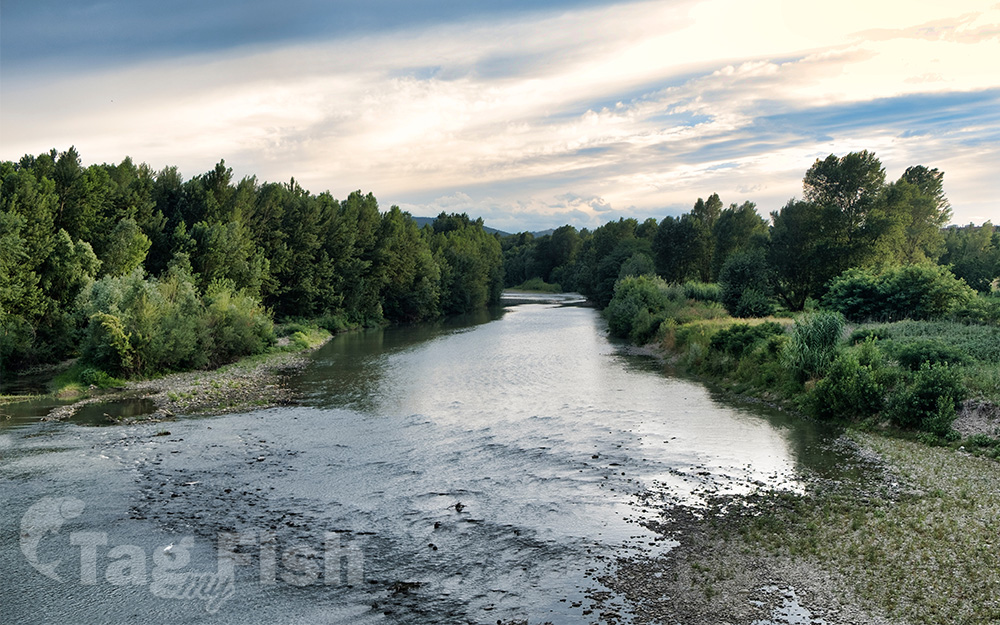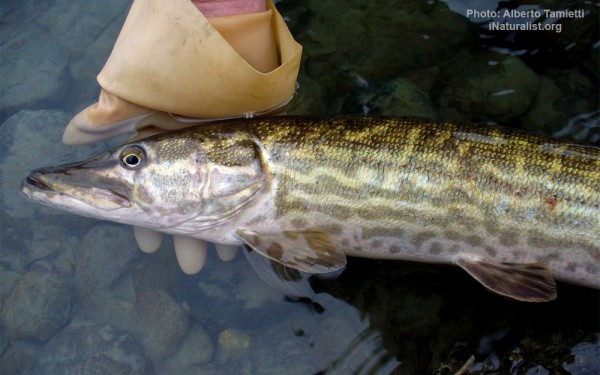Reno

Esociformes - Pikes
Esociformes - Pikes
Esociformes - Pikes
The Reno is a river of Emilia-Romagna, northern Italy. It is the tenth longest river in Italy (the sixth longest of those that flow directly into the sea) and the most important of the region apart from the Po.
The Reno was a tributary of the Po until the middle of the 18th century when the course was diverted to lessen the risk of devastating floods. It now joins the Adriatic Sea near Casalborsetti, south-east of the Valli di Comacchio.
It has a drainage basin of about 5,000 square kilometres (1,900 sq mi). The annual average discharge at the mouth is about 95 cubic metres per second (3,400 cu ft/s); at the point the river start to flow in the Pianura Padana (Po River Plain), it amounts to about 25 cubic metres per second (880 cu ft/s).
The river rises in the Le Lari massif of the province of Pistoia (Tuscany) at about 745 metres (2,444 ft) above sea level, from two streams that join near Le Piastre, in the comune of Pistoia. Its upper course marks the border between Tuscany and Emilia-Romagna and flows in a wooded area crossed by the Bologna-Porretta-Pistoia railway line (inaugurated in 1864 and one of the most outstanding for the time as for engineering effort).
The upper course is characterized by several artificial reservoirs whose dams are used for hydro-electric energy production. The power produced in the basin of the Reno basin is second, for Apennine rivers, only to that of the Nera-Velino in Umbria.
It passes west of Bologna, at Casalecchio di Reno. In its lower course the Reno receives the water of numerous streams, some of which are seasonal. The most important include the Limentra orientale, Silla, Setta, Samoggia, Idice, Sillaro, Santerno and Senio.




